Erofey Pavlovich. Not all passengers of the express trains passing by it realize that in its name, as well as in the name of one of the largest cities in the Far East - Khabarovsk - the memory of the famous Russian explorer, whose name was Yerofey Khabarov, is immortalized. What did this man discover and what is his merit? These questions will be the topic of our conversation.
On a trip for a happy share
Historical information about his childhood is very limited. It is known that he was born and raised in Ustyug, and, having reached a mature age, he settled in Solvychegorsk, where he was engaged in salt mining. But either things didn’t work out, or the young guy got bored with the monotonous gray life, but only Erofey left his familiar place and went to seek adventure, and if possible, happiness, to distant lands, beyond the “Stone Belt” - the Great Ural Range.
Well, let's not talk about happiness, but the adventures were not long in coming. First, on the Yenisei, and then on the banks of the Lena, overgrown with taiga forests, a new settler was engaged in sable hunting. The fur of the Siberian beast was valuable, and hunting brought a hefty profit, but one day, having stumbled upon salt springs in the forest, Khabarov again set to his usual business - boiling salt. In addition, he plowed up empty coastal meadows and took up farming. The matter seemed right, because no one could do without bread and salt ...
A dream born in prison
However, the future explorer Yerofei Khabarov was wrong this time. The Yakut governor, taking advantage of the lack of control of the authorities that existed at that time, took away from him arable land, and salt cooking, and the entire harvest - three thousand pounds of bread. The very same farmer, who tried to resist his arbitrariness, was hidden in prison, where he stayed together with taiga robbers and murderers.
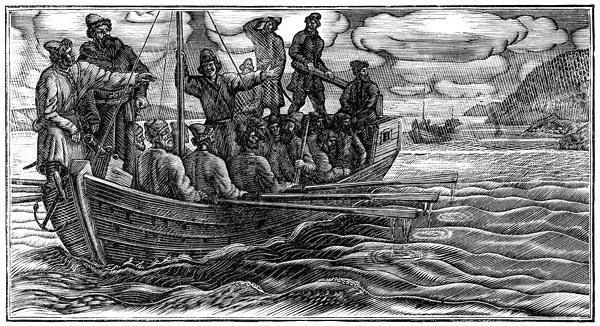
But the time spent behind bars was not in vain. From his cellmates - experienced people who traveled far and wide in the taiga - he heard stories about the Amur lands and their inexhaustible riches. What he dreamed of in those days, what he discovered for himself in conversations with other prisoners is unknown, but, having gone free, a ruined and penniless man boldly embarked on a desperate enterprise.
At the head of a detachment of explorers
By that time, fortunately, his offender was no longer in Yakutsk. Either he himself ended up behind bars, or went for a promotion (which is more likely), but a new governor Frantsbekov was appointed to his position. He turned out to be an official, rooting not only for his own pocket, but also for the interests of the state, and therefore willingly agreed to Khabarov’s proposal to send him with a detachment of Cossacks to the banks of the Amur - to open new lands for Russia and look for sources of income for the treasury. Moreover, the governor instructed Yerofei to select suitable people for the expedition, and to lead the detachment himself.
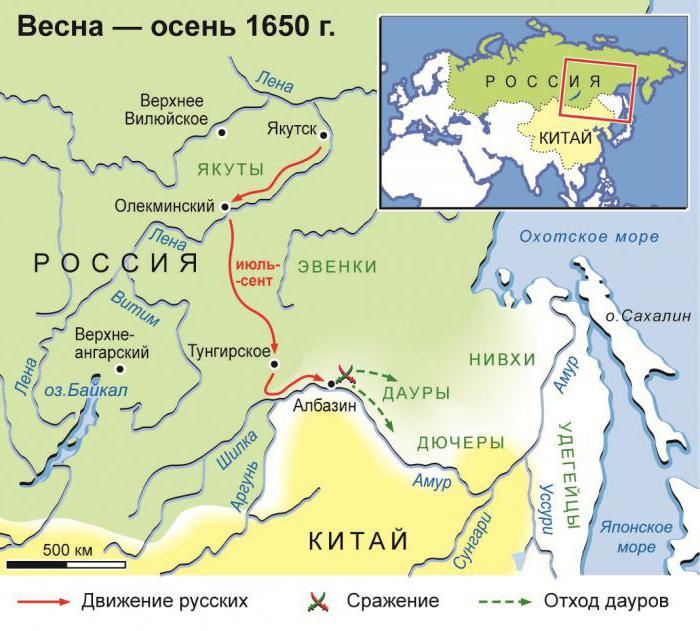
At this stage, the first difficulties began. Many Cossacks were frightened off by the stories of Poyarkov's companions - a explorer who had previously visited the Siberian regions inhabited by Tungus, Daurs, Achans and other wild taiga tribes. The risk involved in this journey was too great. Yerofei Khabarov's campaign was under threat. Only with great difficulty did he manage to recruit eighty people, the same desperate adventurers as himself.
The way from Yakutsk to Amur
The governor, an intelligent and far-sighted man, instructed him not only to collect yasak (tire in the form of fur-bearing animal skins) from the tribes he met on the way, but also to draw up a description of new lands, and most importantly, put them on a map. And in the summer of 1649, having served a parting prayer service in God's temple and blessing, the detachment set out from Yakutsk.
In the 17th century, the only transport arteries of Siberia were rivers, so the journey of Erofei Khabarov and his daredevils began with the fact that, moving up the Lena, they reached the mouth of its largest tributary, the Olekma. Overcoming its fast current and numerous rapids, in late autumn the Cossacks reached another taiga river - the Tugira, on the banks of which they wintered.
The journey continued in January. Moving through deep snow and dragging sleds loaded with boats and all other property, the expedition overcame the Stanovoy Range. People were extremely tired, as strong winds and a blizzard prevented them from pulling a heavy load up the slope. But, having found themselves on the opposite side of the ridge, Khabarov and his detachment, descending the Urka River, reached the Amur.
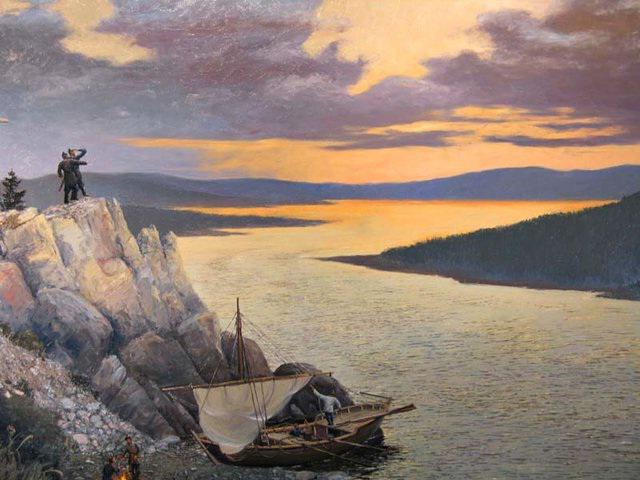
First meetings with taiga residents
Even in its upper reaches, the Cossacks met the settlements of local residents - Daurs. They were real fortresses, surrounded by log walls and surrounded by moats. However, to everyone's surprise, they were deserted. Their inhabitants fled, frightened by the approach of the Cossacks.
Soon there was the first meeting with the local prince. Khabarov really hoped for her. Erofei Pavlovich, through an interpreter, spoke about the purpose of the arrival of the detachment and suggested starting a joint trade. His interlocutor at first nodded his head, but the demand to pay the treasury yasak met with hostility and, looking angrily at Khabarov, left.
Strengthening the Cossack detachment
In the same year, Khabarov, not risking going deep into the taiga with a small group, returned to Yakutsk for help, leaving the bulk of the detachment on the Amur. The governor, having listened with interest to his message about the new lands and the prospects associated with them, detached one hundred and eighty people at his disposal. Returning to his comrades, Khabarov found them in good health, but exhausted by the constant raids of the Daurs. However, from these clashes, the Cossacks, armed with guns, always emerged victorious, for they put to flight their opponents who did not know firearms.
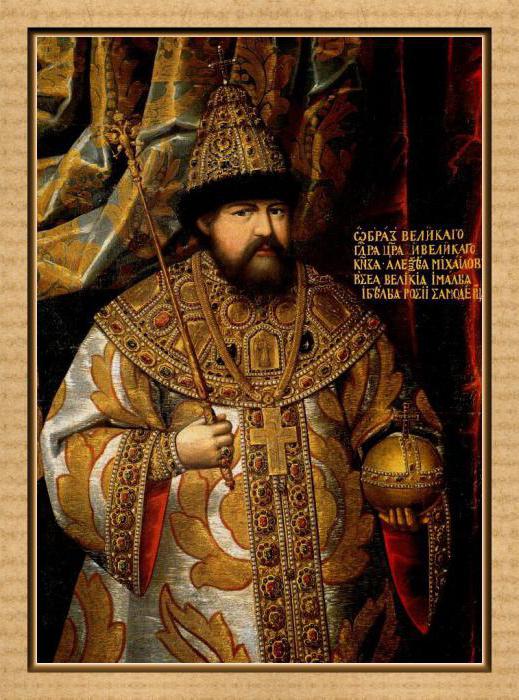
When the discoveries of Yerofey Khabarov and his Cossacks became known in Moscow, Tsar Alexei Mikhailovich ordered additional forces to be sent to help him. In addition, he sent trading people beyond the Urals with a fair supply of lead and gunpowder. Already in the summer of 1651, a large and well-armed detachment, commanded by Khabarov, set off down the Amur. Erofei Pavlovich and his people, bringing the Daurian tribes into obedience, sent a rich tribute from the skins of fur animals to the treasury.
Clashes with Achans and Manchu troops
But the Achan tribes, who also inhabited that region, were brave and warlike. They offered fierce resistance to the Cossacks and more than once attacked their camps. However, the advantage of firearms over the bows of savages affected this time as well. The taiga residents fled in panic, barely hearing the shots. Not having the strength to cope with the newcomers, they called for help from the Manchu merchants, armed by that time with guns, but the Cossacks put this detachment to flight as well.
Despite victories in local clashes and additional help sent from Yakutsk, it was dangerous to continue collecting yasak. It was possible to learn from local residents that an offensive of a large Manchurian army was being prepared, sent to prevent the Russians from penetrating into the Amur region. I had to stop at and establish a settlement there.
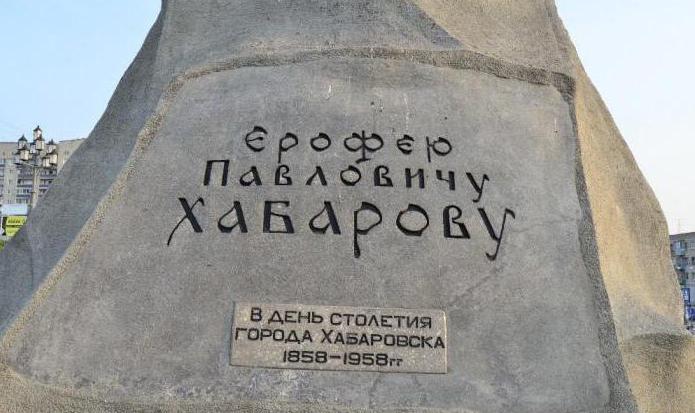
Suppression of the rebellion and the massive influx of settlers
In the same period, part of the Cossacks rebelled, trying to get out of subordination. And this rebellion was forced to suppress Erofey Khabarov. His biography contains information about this sad episode. Subsequently, he was often accused of excessive cruelty. Perhaps it was so, because the years of Yerofey Khabarov's life, spent in harsh taiga conditions, left their mark on the character and behavior of this person.
Soon, by royal decree, the Daurian Voivodeship was formed, where specially appointed officials and service people went. These years were marked by a large influx of settlers who had heard about the wealth of the region and aspired to the banks of the Amur. The government was forced to establish a special outpost to restrict the entry of those who wished.
Slanders and intrigues
Khabarov's further stay on the Amur was overshadowed by the intrigues and intrigues of the officials who had arrived by that time. They removed him from real power and even tried to accuse him of abuse. Arrested, he was taken to Moscow. But everything ended well. In the capital, they knew perfectly well who Yerofey Khabarov was, what he discovered and did for Russia, what his merits were. Having generously rewarded, the traveler was honorably released home. Acquitted, he returned to Siberia.
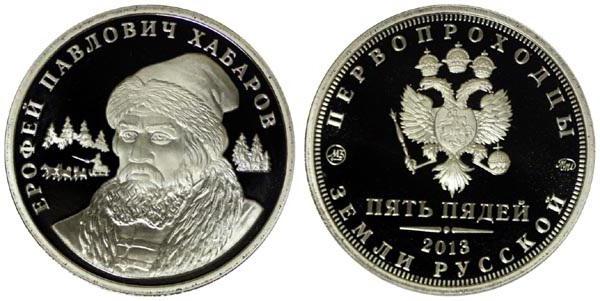
The subsequent years of Yerofei Khabarov's life left no traces on the pages of history. The date of his death is unknown, as well as the year of birth. But reports were preserved that described in detail all the lands annexed to the Russian state, and the wealth that Yerofey Khabarov bestowed on the country. What this man discovered in his travels is repeatedly described by researchers of his life. The station Erofei Pavlovich and the city of Khabarovsk preserved his name for posterity.
